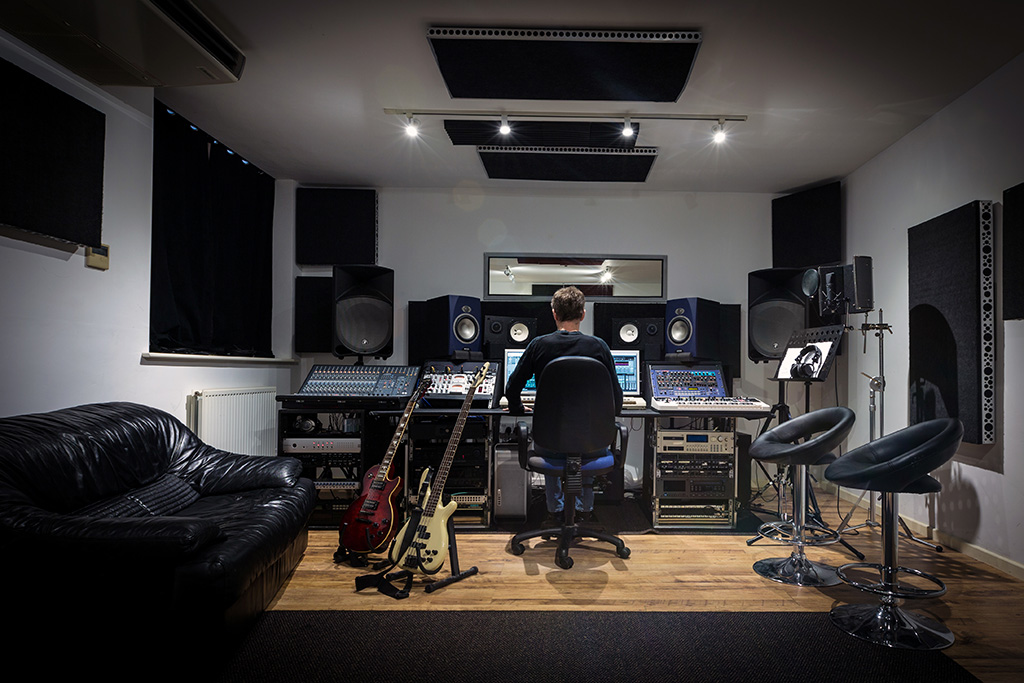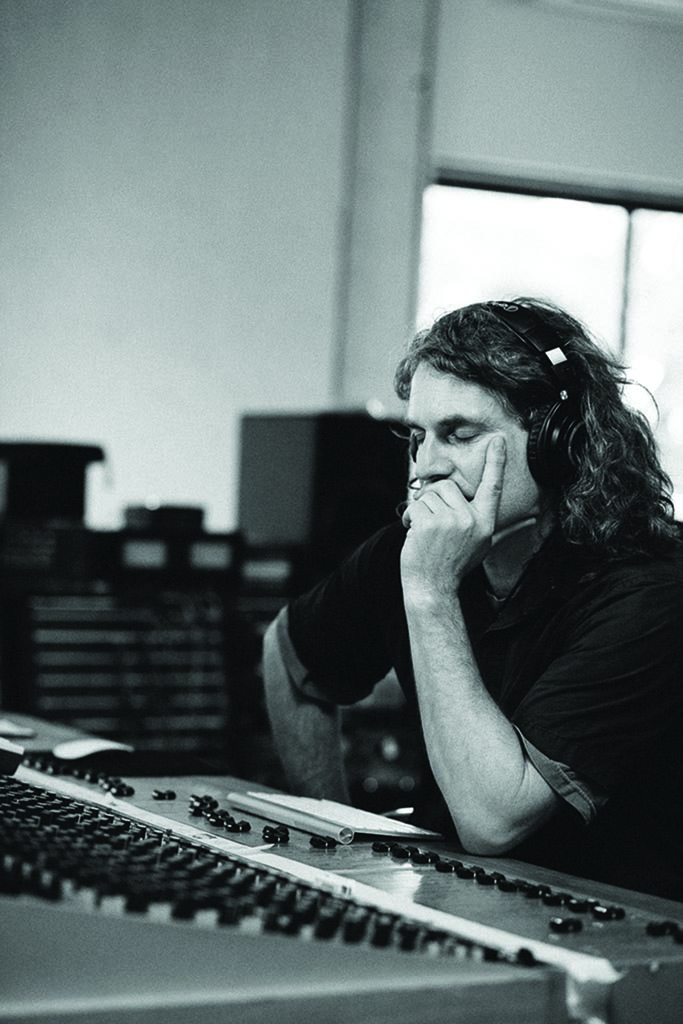LISTEN HERE
12 Sep 2023
THE EVOLUTION OF THE MIX

Subscribe to CX E-News
Mixes are mostly ‘evolved’ these days, rather than built from scratch at the end of a recording process. Unlike previous decades where there was a distinct line between the two tasks, today we can produce a finished product from concept to final mix, in many cases without ever leaving our preferred DAW environment. So how does that change things?
Evolving a mix, rather than starting one from scratch with nought but raw files, undoubtedly changes the way a production comes together. For some readers out there, the idea of a mix being constructed from a bunch of raw tracking alone at the end of a ‘recording phase’, minus the original DAW session, including all its playlist layers, in-progress plugins and mix bus processing, might seem like a foreign concept. And as for mixing off tape, by extension, that’s a trip to the moon!
But for those of us who do know the difference between the recording and mixing phases of a production, and by design or circumstance no longer bother to maintain a delineation between them, the evolving mix demands a different mindset. Yet how that mindset differs and what its dangers or pitfalls might be is a question most of us have simply ignored in recent years, which is an oddly blasé game to play when it comes to mixing. Evolving a mix is different in more ways than you might think, and it pays to know what these differences are.
When a mix can essentially start the moment a recording kicks off, it almost goes without saying that the changes it foreshadows are enormous. Essentially everything that was once linear about the music production process, from recording through to mastering, can now be performed in essentially any order you like in one amorphous task, or at least that’s the current perception.
In this scenario, the sounds you monitor during tracking, overdubbing and editing are always in play and open to scrutiny. You can start building effects right away, EQing instruments, grouping, bussing, editing parts and even setting up the mix bus to export a quasi-final master. While this is arguably one of the great advantages DAW-based systems have over older, linear analogue and digital setups, simply because you can work this way, should you? Sure, you can start working on sounds as you imagine them in the mix right from the get-go, rather than having to put those ideas off until later, but what are the consequences of that mindset?
When your mind is thinking about mixing from the outset, your workflow changes considerably, and the way you interact with others around you in the studio also changes. The main concern here if you’re the producer, engineer or mix engineer – or all three at once if that’s your role here – is staying focused and ‘in the moment’. Rather than concentrating on the musicians around you and the performances themselves, there’s a tendency here to start fiddling with sounds and disappearing down your own rabbit hole while others around you sit idly by. And that, my friends, is not cool. When you stop listening carefully to the sounds you’re recording, interacting with those around you or communicating what you’re up to during a session, you cease to be a decent engineer.
Staying inside the recording process; listening to performances, discussing them with the artist, imagining how a musical approach might be improved or changed, making sure recording chains are all working as they should and that everyone can hear superbly well in headphones, and so on, is already a large enough set of tasks for the average mind to cope with. They’re all important, time consuming and mentally draining, and can’t afford to be compromised by outside influences.
But when you add to this exhaustive list a bunch of open-ended mixing questions around things like whether a guitar overdub should have a plate reverb on it or a delay, whether a vocal needs a high-pass filter at 70Hz or 105, whether the mix bus could do with a 16kHz shelf on it or how the panning might work now that we’ve added a new tambourine, two acoustics and congas, that’s exactly what you’re doing. You’re adding too many tasks to your mental process, potentially compromising the session by either overlooking a crucial recording chain, not having enough headspace to hear why an overdub isn’t working musically, or just pissing off those around you by ignoring them for too long while you perform some ‘crucial’ task that they’re not privy to.
Sometimes of course, the opposite scenario holds true. As a recording engineer, you might be utterly focussed on the recording process, determined to avoid any mix related tasks until further down the pipe, meanwhile it’s the artists around you who either can’t separate the processes in their own heads, or can’t stop themselves from thinking too far down the road even when they know better. There may even nerves at play here too: some artists unconsciously try to avoid scrutiny by asking a bunch of seemingly unrelated questions.
Regardless, when this happens during a tracking session you can often find yourself pulled in 10 different directions by those around you as they seek answers to mixing and mastering (or even video and management- related!) questions:
“Hey Andy, what does it sound like when we pan those two sounds left and right just for the chorus?” or “Can we change my guitar sound to better suit the mix right now; maybe see what it sounds like a bit brighter?” or “Do you think we need to organise a band manager now, or should we wait ’til the album’s done, do you reckon?”
Andy hits the talkback button and responds: “Maybe let’s just get this vocal right first, shall we, and maybe later on we can talk about management over a coffee…”
All I can say is that while DAW-based productions have innumerable up-sides, given their capacity for a seemingly endless array of processing tasks, they are dumber than a bag of hammers when it comes to people management because they can literally say ‘Yes!’ to any request, whether it be idiotic or well-considered. Sometimes a limitation is critical to keeping things rolling.
Drifting Off Course
One of the most insidious things that can happen when a mix evolves over the course of a project is that you drift off course without realising it. And the longer the project goes and the more familiar you become with it, the further off course this drift can take you, whereupon you eventually you find yourself living on an island somewhere with an old volleyball as your musical collaborator… or at least, that’s the risk.
In short, it’s about a loss of perspective, and a sometimes unhealthy (or unhelpful) attachment to old audio processing that isn’t doing your mix any favours.
You can grow accustomed to just about anything if you listen to it for long enough, and this is where an evolved mix can sometimes really let you down.
In some cases where a mix has been evolving over weeks, months or even years – I kid you not – people lose sight of what the original tracking sounded like, and in many cases, haven’t heard the ‘in-the-raw’, plug-in and effects-free musical elements for months! In other words, what the unadorned tracking files originally sounded like is forgotten as the mix evolves, and even though playing the raw files back seems like a relatively easy task to perform, people either don’t think to do it, or more commonly, choose not to because they think everything is hunky dory. In some other cases, people also develop an irrational fear of back-tracking and discovering something they’d rather not reveal to themselves or others. In some ways, the evolving mix can, in this situation, be used to hide problems rather than reveal and then resolve them.
In With The Old, In With The New
In many cases too, early tracking elements can become outmoded or even superseded by more recent overdubs during an endlessly evolving mix production. Indeed, many early overdubs on a typical recording session will take place with little or no concrete expectation of what might ultimately follow in the future. I mean let’s face it, who among us hasn’t recorded music in the last two decades where a song arrangement wasn’t predetermined: you tracked an idea, had another cool idea, had a crisis about the tempo, re-recorded the drums with sticks instead of brushes, recorded even more musical ideas, then a few more, then changed a few of the lyrics, and so on.
When this freedom of musical expression continues unrestricted for months, and onto this you heap layers of experimental, sometimes half-baked, ill-considered effects and processing, some of the early tracks inevitably become so peripheral sounding in the ‘evolved’ mix that the song essentially turns into an indecipherable mess. But sometimes these early elements need to stay strong in the mix for the music to hang together, but because you’ve had them mixed low for six months while you pile on new parts, you’ve grown unwittingly accustomed to them at the wrong volume – a fatal error.
Regaining Some Objectivity
So ‘evolving’ a mix isn’t necessarily all beer and skittles, as they say, but avoiding many of the traps that lie in wait for those who choose to mix this way is a relatively straightforward task. It’s all about objectivity.
If this crucial ingredient has been eroded away over time, now is the time to act – and when I say ‘now’, I mean, when the mix process begins in earnest. But if you honestly can’t see when or where the ‘mix process’ begins for you, look at your project this way: are you still overdubbing? If the answer is (finally) no, then you’re mixing.
Now is the time to ‘Save As’ create a new session file that you call “All Tracking, No Effects” or whatever, and then ditch every single plug-in. If that sounds all too embarrassing for your fragile ego, do this in private if you must. Now listen to the tracking ‘in the raw’. Get reacquainted with the unprocessed sounds on file. Let yourself be influenced by your ears alone and try your best to recalibrate your thinking and recapture your objectivity. It may not be quick, it may be confronting at times, but it will be well worth it.
When you do finally go back into the ‘evolved mix’ file you might be in for a rude shock, and that’s a good thing.

Andy Stewart owns and operates The Mill studio in Victoria, a world-class production, mixing and mastering facility. He’s happy to respond to any pleas for pro audio help… contact him at: andy@themill.net.au or visit: www.themillstudio.com.au
Subscribe
Published monthly since 1991, our famous AV industry magazine is free for download or pay for print. Subscribers also receive CX News, our free weekly email with the latest industry news and jobs.




